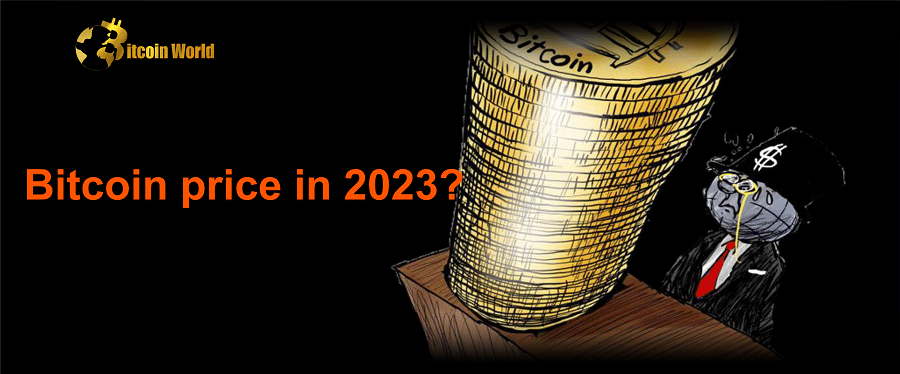With new regulations in the United States and the European Union, the rapidly evolving cryptocurrency ecosystem will enter a new phase in 2023.
Bitcoin, like the rest of the digital asset market, had a bumpy ride in 2022. The cryptocurrency began the year trading around $46,700 and is now trading 64% lower at $16,560 at the time of writing. As a result, the coin’s market capitalization fell from around $900 billion on January 1, 2022 to around $320 billion by the end of the year.
While Bitcoin’s price drop could be attributed to the extraordinary circumstances that have befallen the entire cryptocurrency market this year, it is critical to reconsider the 2022 price predictions made by various market entities. Analyst PlanB’s Bitcoin Stock-to-Flow (S2F) model was one of the most popular predictions.
According to the S2F model, BTC will be worth nearly $110,000 by December 2022. The cryptocurrency finished the year trading nearly 85% off target, raising concerns about the price model’s validity. Stock-to-flow models are commonly used to price commodities in traditional markets because they take into account two variables associated with an asset: stock and flow. “Stock” refers to the asset’s total existing supply, while “flow” refers to the asset’s new supply created each year.
“There are many factors that can influence the price of Bitcoin, including market demand, regulatory changes, and technological developments,” said Antoni Trenchev, co-founder and managing partner of Nexo, a digital asset management platform, to Cointelegraph. The S2F model is one tool that can be used to forecast Bitcoin’s future price, but keep in mind that it is based on certain assumptions and is not a definitive guide to the future.”
Other models, in addition to S2F, have been used to forecast the price of Bitcoin in the near and distant future. Elliott Wave Theory and Hyperwave Theory are two popular ones. While both have roots in traditional financial markets, their success in predicting the price of BTC has also been limited.
Given that Bitcoin only became an asset a little more than a decade ago, it is safe to say that the cryptocurrency is still in its early stages of price discovery when compared to commodities such as gold or silver, as well as other leading technology stocks such as Apple and Microsoft. While there are various BTC price predictions, it is important to keep in mind the limited availability of cyclical data to factor into these models.
Trenchev went on to say that there are numerous models and approaches that can be used to forecast the price of Bitcoin. Some people use technical analysis to identify patterns and trends by studying historical price and volume data. Others employ fundamental analysis, which entails assessing the underlying factors that influence an asset’s demand and supply. There is no single model or approach that is universally regarded as the most reliable for predicting Bitcoin’s price, and it is critical to consider a variety of factors when making any investment decisions.














